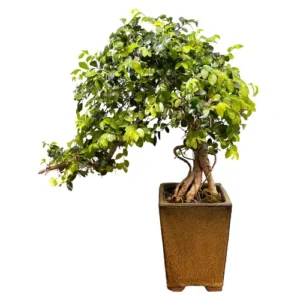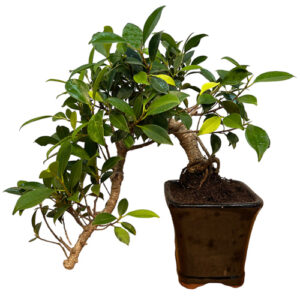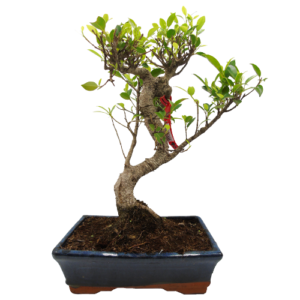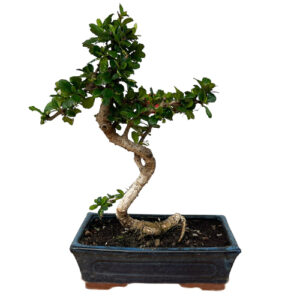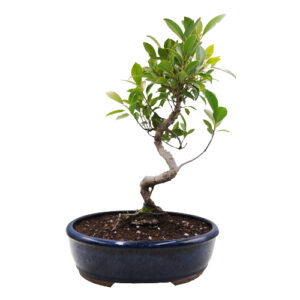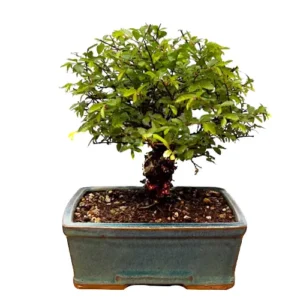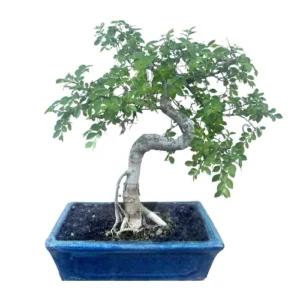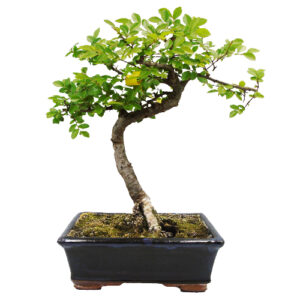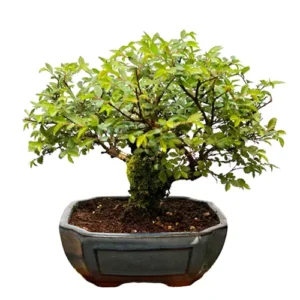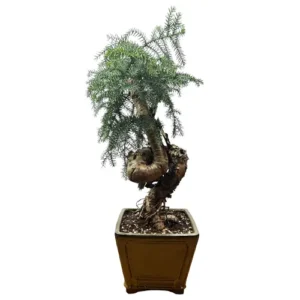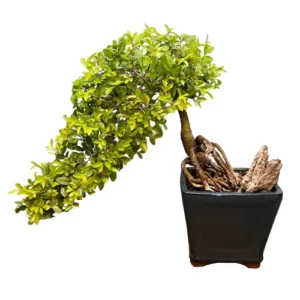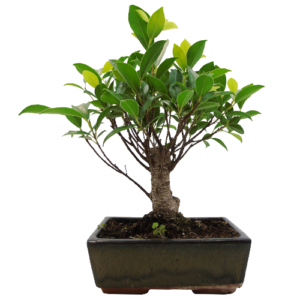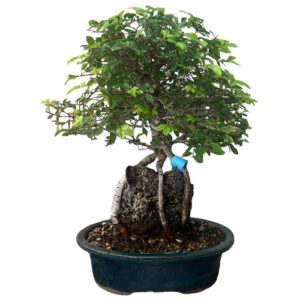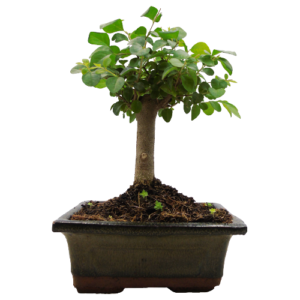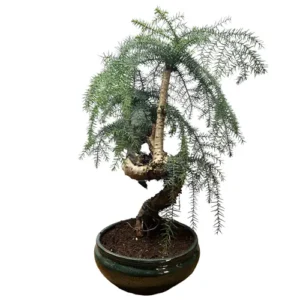Schefflera arboricola
Hawaiian Umbrella Bonsai
Naitve to Australia, China and Taiwan. This tropical evergreen shrub has compound leaves spreading from fine stalks for an elegant aesthetic. Schefflera arboricola grow aerial roots complimenting a visually striking bonsai tree.
Hawaiian Umbrella Bonsai Care Tips
Placement
Keep your Hawaiian Umbrella tree indoors throughout the calendar year. This tree thrives in temperatures from 18 to 22 degrees C. Temperatures should not fall below 10 degrees C. Schefflera can handle lower light and humidity but for the plant to thrive a bright spot by a window is advised. The more light this tree receives the stronger the stalk and smaller the leaves will be.
Watering
Be sure to keep the soil of your Hawaiian Umbrella tree moist. Humidity goes a long way to keep the aerial roots of this species satiated, using a humidity tray is advisable. In winter, be cautious with watering this bonsai and make sure the root ball does not dry if above a heating device.
Feeding & Fertilising
Feed your Hawaiian Umbrella bonsai once a week during the growing season. Use organic solid feed in the summer. In winter feed once a month.
Pruning & Wiring
Pruning your bonsai is important not only to create or maintain an aesthetic style but also to ensure optimal health. Hawaiian Umbrella is responsive to pruning. Cutting back branches above the node allows the tree to die back to it. Defoilating can be done after winter by removing the leaves. New branch tips can be pinched on a healthy tree.
It’s best to wire Schefflera’s primary branches. This species does not produce hardwood and its branches are easy to snap. Younger shoots are more responsive to wiring but proceed with care. We recommend using wires with a thickness that matches the thickness of the branch: if the wire you choose is too thick you will damage the bark. If it is too thin, it won’t be effective.
Repotting
Repotting your tree is an important way to provide a fresh and suitable soil mix and ensure appropriate root health. Proceed carefully when repotting your Hawaiian Umbrella bonsai as the fleshy roots are easily damaged. Every second year in Spring is the time to repot.
Trees that are ready for repotting will require root pruning, a suitable new pot and appropriate soil mix.
When repotting, do not cut back the root mass by a large amount, and choose a well-draining soil mix that has a neutral or slightly higher PH value of 5-6 but not over 7. We tend to use a mixture of different speciality bonsai soils on our trees. Every species is different so please contact us for free soil-mix advice or to take advantage of our repotting service.
Bonsai make for a one-of-a-kind indoor plant offering elegance, nature and art all in one minute form. Across an array of exquisite and erudite species, they all demand their own specific care and cultivation needs in order for their beauty to flourish. We have an extensive library of care guides for indoor bonsai trees so you can make an informed and considered choice. It’s not about selecting the perfect bonsai, it’s about selecting the perfect bonsai for you.
Hawaiian Umbrella Bonsai - Typical Queries
How to propagate Hawaiian Umbrella bonsai?
Hawaiian Umbrella can be propagated from both seeds and cuttings. Cuttings are particularly advised for their ease and can even root in a glass of water. Stem cuttings can be used but any part of a Hawaiian Umbrella bar leaves can be used to success. Air layering isn’t particularly advised but can be done with a cut approximately the size of a golf ball.
Do Hawaiian Umbrella bonsai attract pests and diseases?
It is rare for this bonsai to suffer from health issues. Scale and aphids can occur on new trees in particular that are yet to callus. Insecticides should handle these appropriately. Root rot and fungus can be avoided by not overwatering and making sure the drainage is adequate for the plant.
Can you keep Hawaiian Umbrella bonsai outdoors?
Hawaiian Umbrella is as tropical as its title, it is only advised to keep this outdoor in such an environment. In temperate climates where nighttime warmth and high temperatures day round can’t be achieved, it is not advisable.

